This is a continuation of a series of posts on the Sony a7RIII. You should be able to find all the posts about that camera in the Category List on the right sidebar, below the Articles widget. There’s a drop-down menu there that you can use to get to all the posts in this series; just look for “a7RIII”. This post also references the work I’ve been doing with PDAF on the Nikon D850, and thus I’m tagging it for that camera as well.
Yesterday, I came up with a compromise calibration for the AF Adjust on the D850 for the Nikon 70-200/2.8E lens. Here’s what the correction did for the lens at 105mm:
This shows the location of the focal plane at the sensor as an offset from perfect focusing. Negative numbers indicate front-focusing. Each Adobe RGB color plane is plotted for 10 samples at each f-stop in the series. In case the tiny movements of the focal plane don’t mean much to you, let’s recast the above data into the circles of confusion (CoC) that will result from the measured misfocusing:
The pixel pitch of the D850 is about 4.3 micrometers (um), so we’re looking at CoCs between negligible (at the narrower f-stops) to 3 pixels (at the widest stop).
The Sony a7RIII uses contrast detection autofocusing (CDAF) tweaks after it initially does phase detection autofocusing (PDAF). The conventional wisdom is that it always does the CDAF tweak at the taking aperture so that focus shift in Sony lenses is not a problem. The a7RIII does not support manual AF Adjustments for native lenses. The conventional wisdom is that it doesn’t need to, because of the CDAF tweak. I have been a believer in the conventional wisdom, but, since I had written the code to measure and plot focus plane errors, I thought I’d run it on some a7RIII samples.
Here’s what I got with the 100-400 at 100 mm (spot, medium, AF-S, Setting Effect on):
That looks pretty good. The CoCs are under one pixel. But there seems to be a systematic error, which shouldn’t be there.
With the 70-200/4 at 100 mm:
Bang on wide open, but off by two pixels by f/5.6.
This shouldn’t be happening, should it? By the way, I tried AF-C and got results that were all over the place compared to the AF-S ones.
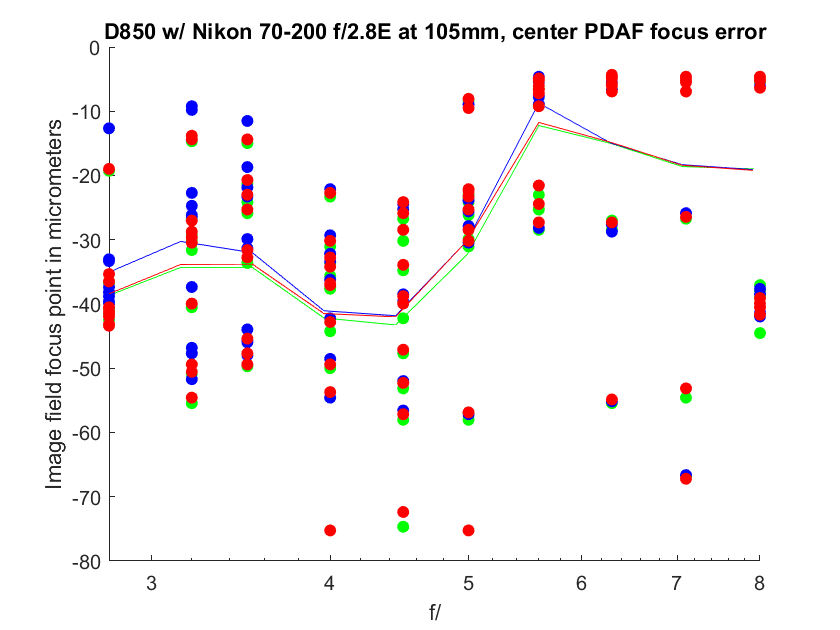
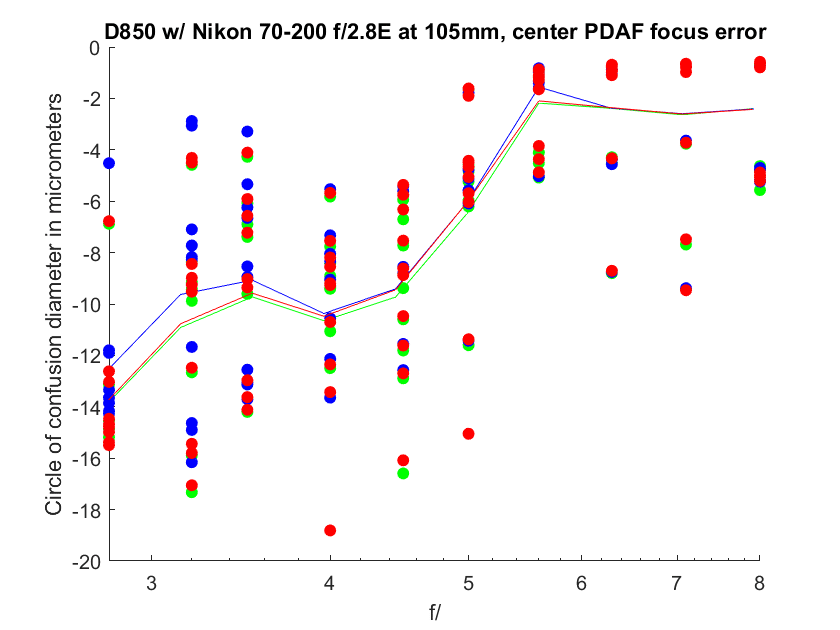
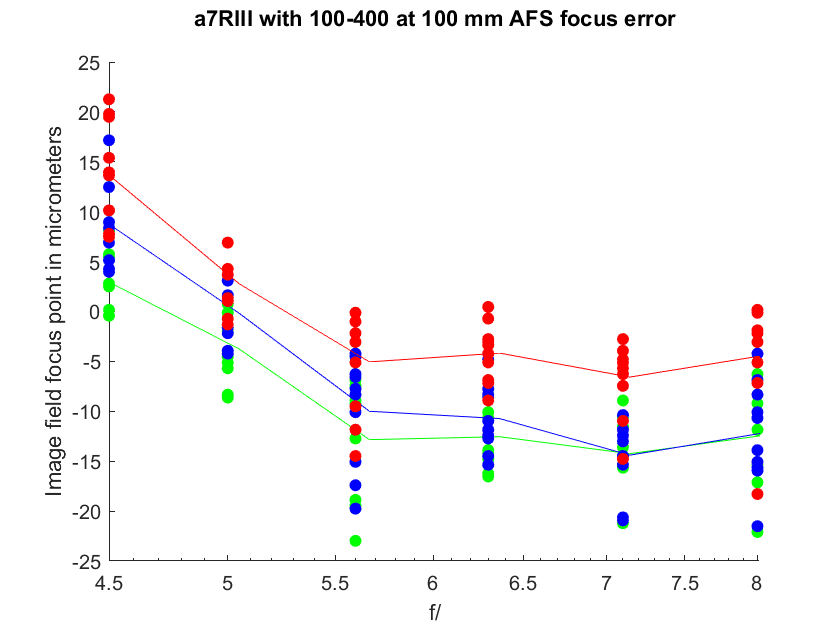
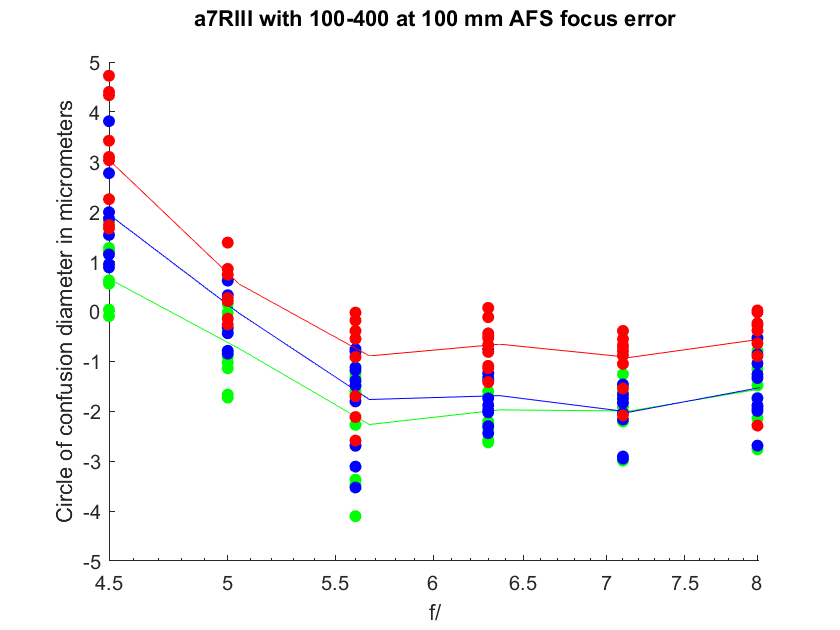
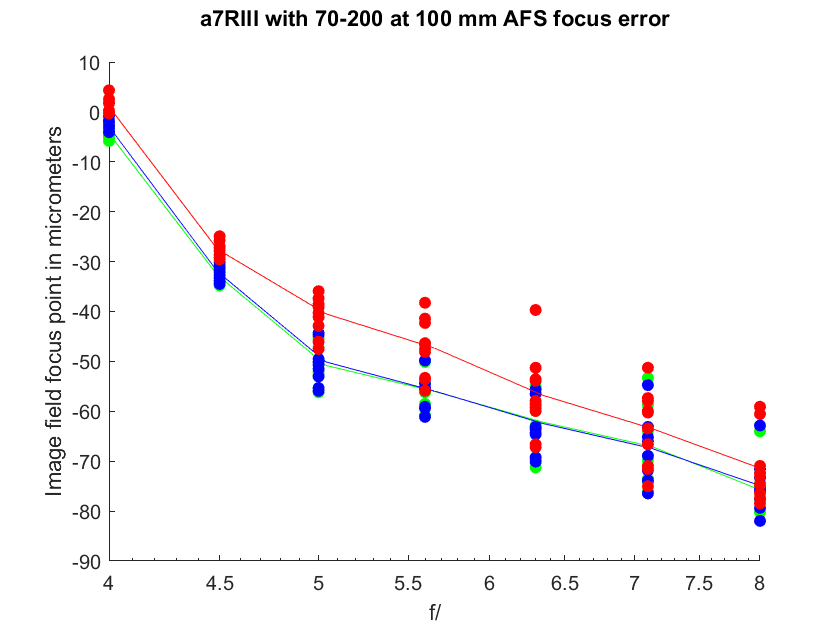
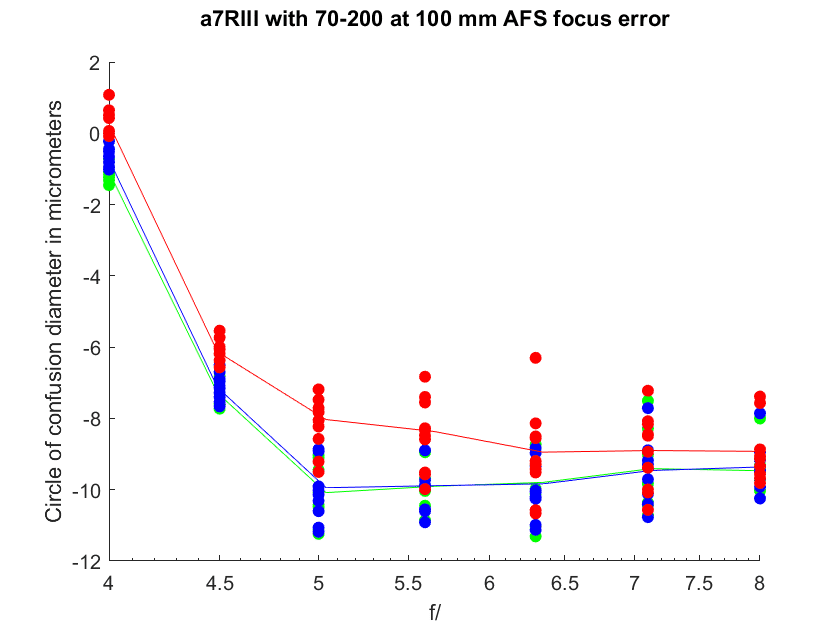
This is very weird! But I’ve always wondered why Olympus has a PDAF adjustment feature for their mirrorless cameras with embedded PDAF sensors, eg. OMD E-M1, versions 1 and 2. Maybe there’s something else going on?
Probably not related, but there’s a DPR thread about a Sigma 18-35 backfocusing with liveview focusing on a Canon 80D. Sigma’s response is that the lens was optimized for PDAF and may have problems in LV.
The PDAF adjustment feature is necessary for cameras with on-sensor PDAF because such systems are vulnerable to many of the same issues that require it for DSLR PDAF . Specifically, tilted/decentered lens elements and/or tilted camera mounts, any of which can cause the two opposite light rays entering the camera and falling onto the PDAF sensor to have uneven phase differentials. The only difference with DSLRs is they have more points of failure in this regard, specifically the alignment of their mirror/sub-mirror assemblies.
Maybe necessary, but in the case of the a7x cameras, unavailable. The PDAF tweaks in those cameras only apply to the adapter that does PDAF.
I think AF-C mode won’t use wide open aperture to focus when you stop it down, so there isn’t any focus shift caused by spherical aberration
I’ll check, but from my initial tests, AF-C is not as repeatable as AF-S.
Jim,
I was working with AF-C today as well. I found it does a lot of focus-pumping, which in the camera’s default Priority AF-C setting of “Balanced” causes a lot of OOF shots when the camera allows an exposure during one of the wobbles. If I change it from “Balanced” to “AF” then the camera becomes much more stubborn about only allowing in-focus shots, thus reducing the chance of an exposure during one of its transitory focus-pumping episodes.
I’m using Focus Priority: AF for all my testing, both AF-S and AF-C. That’s useless in practice for moving subjects, though.
I just tried an experiment with different AF area sizes. In Center or Flexible spot modes, if I use a Small/Medium AF point (my preferred settings), I see the AF-C pumping. However if I use a Large AF point then the pumping disappears, even though the AF point completely covers my selected target for all three sizes. It would seem Sony’s motion/phase detection is a bit more jumpy than it needs to be, or is not calibrated to the number of PDAF/CDAF sample points. Try the large AF point and see if the AF-C consistency issues persist.
I must be missing something. If a pixel is just over 4 um, how is the A7RIII 70-200 @ 100 mm AFS error two pixels at 5.6? The total error looks like about 5 um.
The average green channel CoC is 10 um at f/5.6, the way I read that chart.